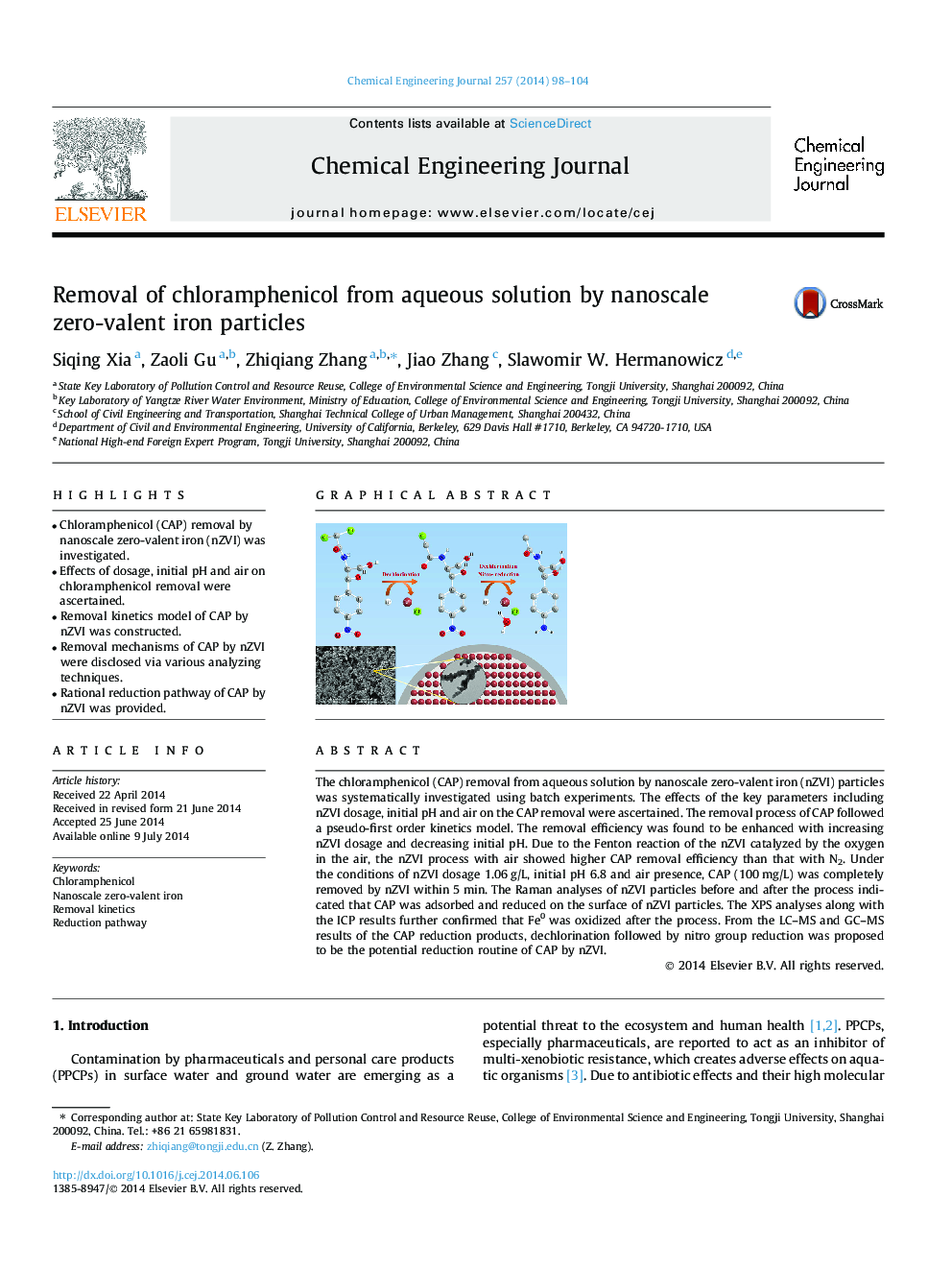| کد مقاله | کد نشریه | سال انتشار | مقاله انگلیسی | نسخه تمام متن |
|---|---|---|---|---|
| 147317 | 456389 | 2014 | 7 صفحه PDF | دانلود رایگان |
• Chloramphenicol (CAP) removal by nanoscale zero-valent iron (nZVI) was investigated.
• Effects of dosage, initial pH and air on chloramphenicol removal were ascertained.
• Removal kinetics model of CAP by nZVI was constructed.
• Removal mechanisms of CAP by nZVI were disclosed via various analyzing techniques.
• Rational reduction pathway of CAP by nZVI was provided.
The chloramphenicol (CAP) removal from aqueous solution by nanoscale zero-valent iron (nZVI) particles was systematically investigated using batch experiments. The effects of the key parameters including nZVI dosage, initial pH and air on the CAP removal were ascertained. The removal process of CAP followed a pseudo-first order kinetics model. The removal efficiency was found to be enhanced with increasing nZVI dosage and decreasing initial pH. Due to the Fenton reaction of the nZVI catalyzed by the oxygen in the air, the nZVI process with air showed higher CAP removal efficiency than that with N2. Under the conditions of nZVI dosage 1.06 g/L, initial pH 6.8 and air presence, CAP (100 mg/L) was completely removed by nZVI within 5 min. The Raman analyses of nZVI particles before and after the process indicated that CAP was adsorbed and reduced on the surface of nZVI particles. The XPS analyses along with the ICP results further confirmed that Fe0 was oxidized after the process. From the LC–MS and GC–MS results of the CAP reduction products, dechlorination followed by nitro group reduction was proposed to be the potential reduction routine of CAP by nZVI.
Figure optionsDownload as PowerPoint slide
Journal: Chemical Engineering Journal - Volume 257, 1 December 2014, Pages 98–104
